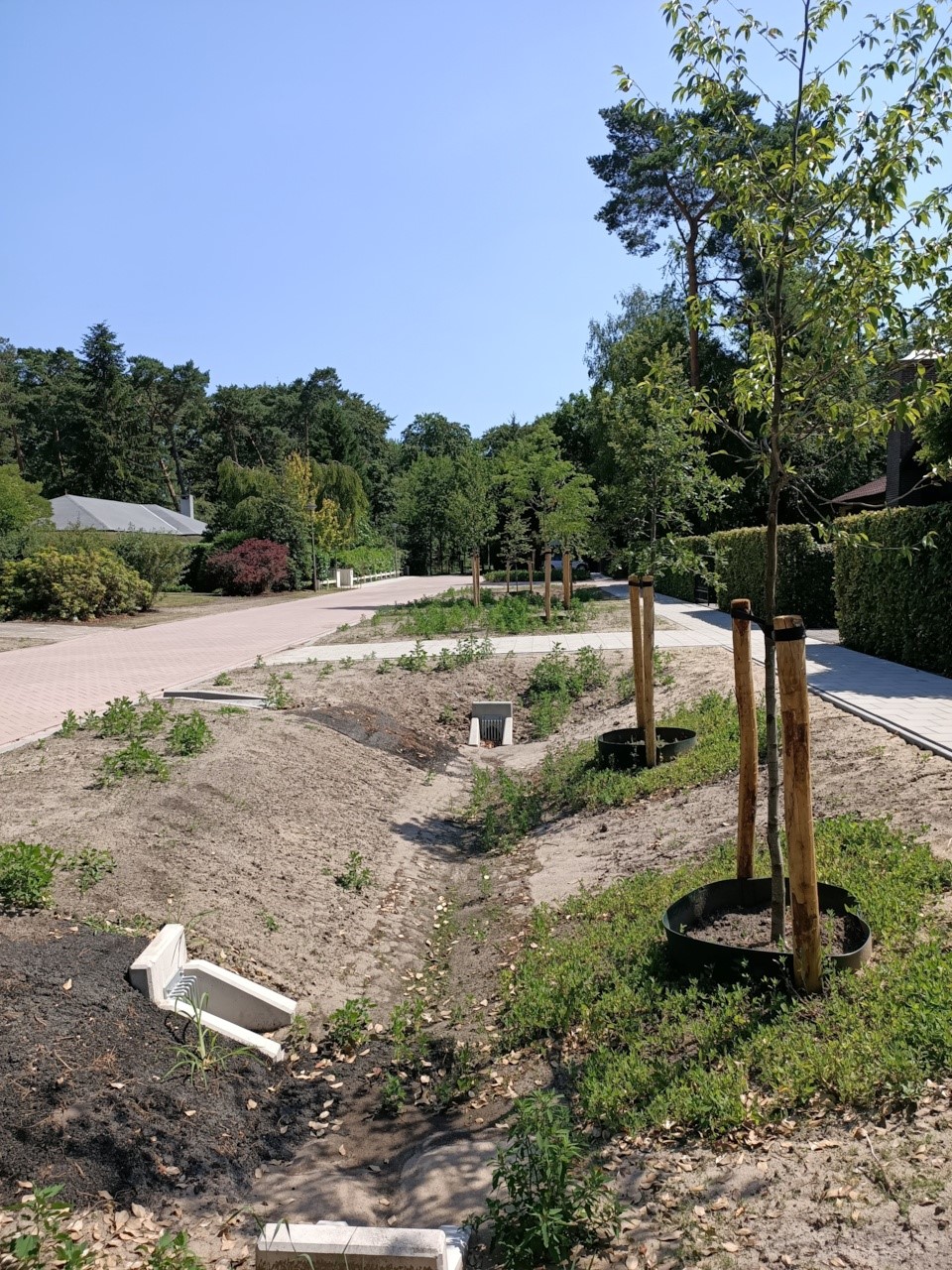New sewer system prevents both waterlogging and dehydration in Putte
During torrential rain, the village of Putte, which falls under the municipality of Woensdrecht, is frequently faced with waterlogging. The climate stress test conducted by the municipality has also shown that Putte is vulnerable to severe downpours. Since the sewer in the Sparrenlaan neighbourhood and surroundings was due for replacement, the municipality addressed this vulnerability by constructing a sewer system that separates rainwater from wastewater.
How does the new sewer system work?
The rainwater in the separate sewer system ends up in an infiltration transport sewer (IT sewer). As long as these pipes are half-full, the rainwater drains into the soil via special small holes. It thus infiltrates into the soil, which prevents dehydration. During severe rainfall, the water flows into one large and three smaller wadis, via effluent containers in the IT sewer and above ground, via gutters. The wadis retain the rainwater locally and allow it to gradually sink into the soil. If the wadis fill up, an additional overflow will ensure that the remaining rainwater is collected in the adjacent pond.

What else has changed?
In addition to constructing a new sewer system, the municipality has also taken other measures:
- The squares in the Sparrenlaan neighbourhood and surroundings have been repaved. In close consultation with local residents, the municipality opted for pavement featuring well-permeable joints. Public support was a major consideration in this project.
- In the wadis, eighty old pine trees were replaced by various trees appropriate to the current climate. For example, the wadis now feature plane trees, Italian alders, and Pyrenean oak, which is not prone to the processionary caterpillar. The trees in the wadi are resilient to heat and to temporary wet feet. Furthermore, the wadis are seeded with grass and a mixture of bee-attracting flowers. The result is both climate resilient and biodiverse.

Are the measures producing the desired effect?
Several monitoring processes are in place to check whether the measures are producing the desired effect:
- The municipality will conduct a visual inspection of the sewer system every ten years as a minimum, and between times if developments so dictate;
- The wadis and the water-permeable joints are regularly cleaned;
- The municipality will monitor the effect of the measures after severe downpours.
Alderman Van Agtmaal: ‘Few people realise how important a sewer system is. The sewers only receive attention when things threaten to go south and, for example, waterlogging occurs. Apart from that, water and wastewater collection and transport will usually pass by unnoticed. However, major efforts are being expended every day to properly manage this valuable infrastructure. The completed project shows that the municipality of Woensdrecht is looking ahead and continuing to build a resilient and flexible system.’
Lessons to be learned
The municipality was firmly committed to ensuring support among local residents. For example, it organised an information evening to explain the purpose and necessity of the project. Furthermore, it has conducted kitchen table talks with several residents and taken local wishes into account in the design. This low-threshold strategy has garnered support among local residents for the work and for the measures. During the project, extensive attention was paid to questions and reports from individual residents.
Contact person
Ralph Maes
Gemeente Woensdrecht
r.maes@woensdrecht.nl
